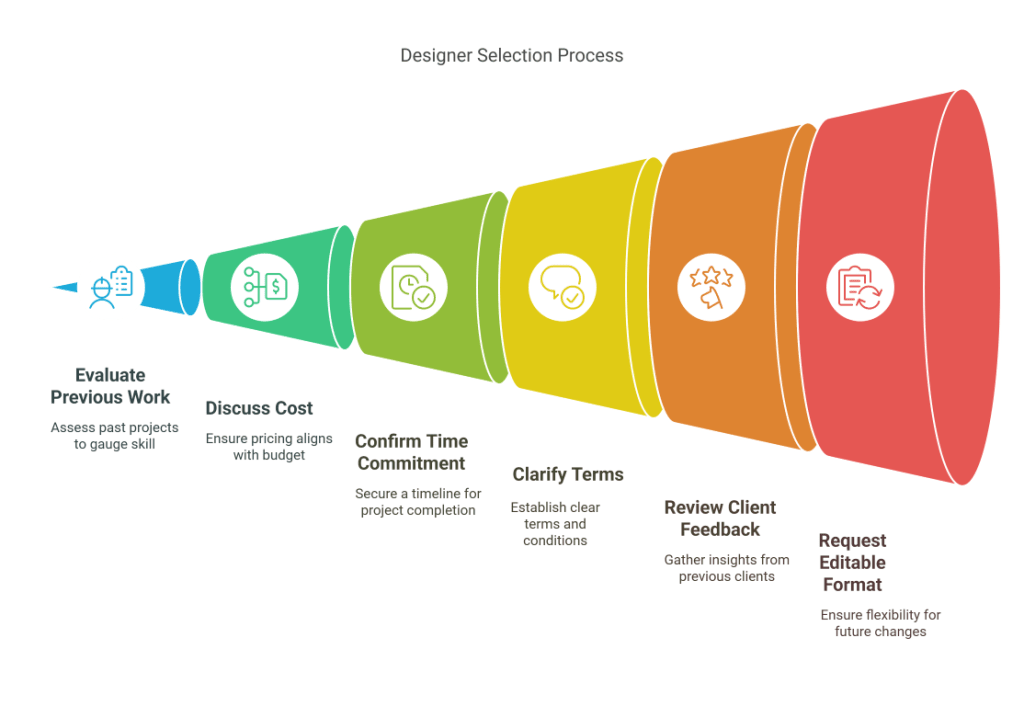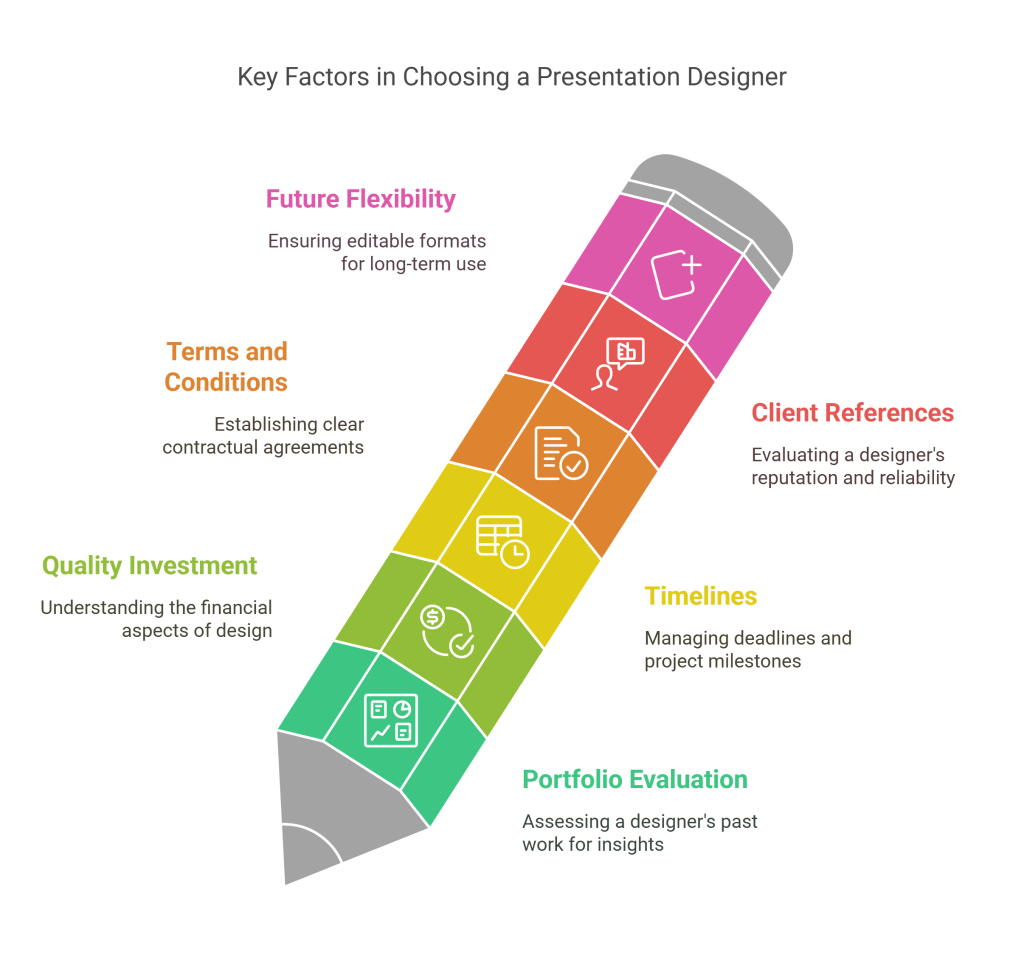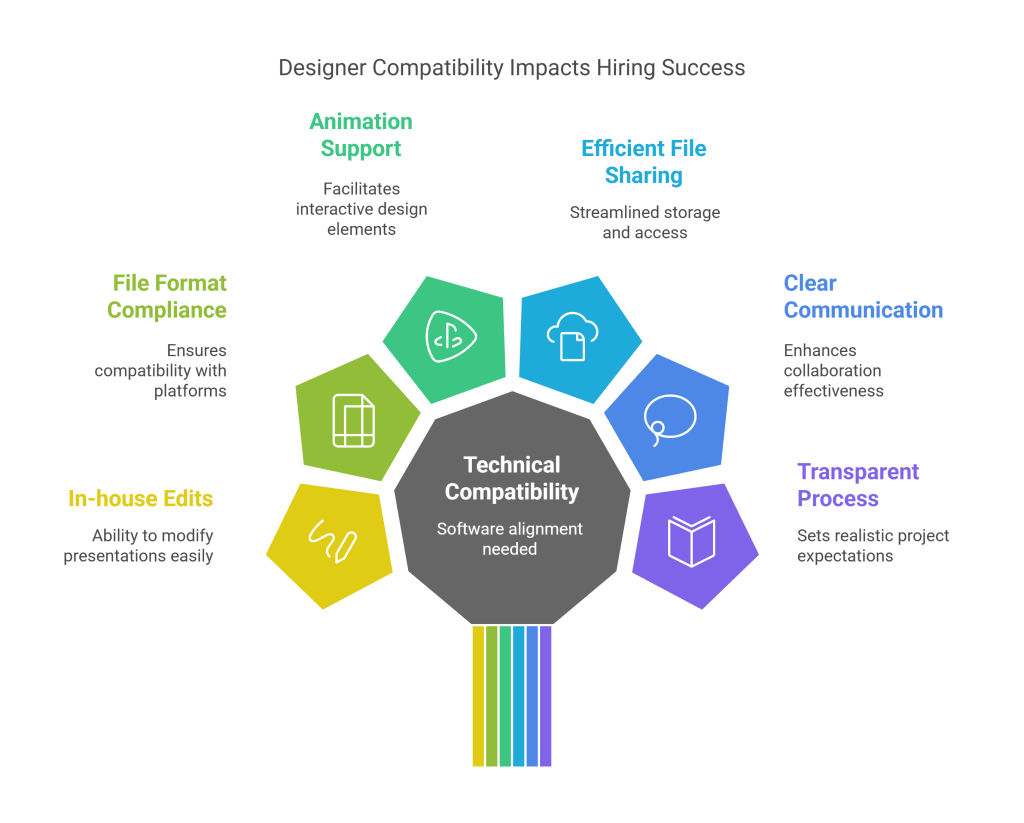6 tips in signing up a designer for your presentation
A business-alliance needs scrupulous planning. Even striking a deal with a designer to have him on board for the designing in your presentation requires elaborate clarification on different issues.
1. Evaluation of previous assignments:
Judging someone’s work becomes easier when you assess him on his previous body of work. You must go through his designing assignments to have a hint of his talent and insights. If possible, ask him to showcase his skills on a very small part of your theme without any charges. If that happens, that will be the real assesEnterprisent of his craft.
2. Costing:
Bear in mind that quality does not always come on exorbitant prices. But yes, quality sells and comes on a certain cost as well. So do not compromise on quality due to a cost which is a bit higher than you expected. So, an excellent designer with a higher cost augurs well for you.
3. Commitment to time:
After elaborating the extent of details in your presentation, obtain a time-commitment from the designer you have selected.
4. Clarity on terms and conditions:
Terms and conditions, like how will he deal with the changes suggested by you in the designing or your dissatisfaction with the final product, must be clear before he and you have a business-association. Extra charges, the number of the free of cost-changes or what if overhaul on a large basis needed, everything should be decided before hiring him officially.
5. Review of earlier clients:
Terms and conditions, like how will he deal with the changes suggested by you in the designing or your dissatisfaction with the final product, must be clear before he and you have a business-association. Extra charges, the number of the free of cost-changes or what if overhaul on a large basis needed, everything should be decided before hiring him officially.
6. Editable format:
Convey to the designer that you need the final output in an editable format so that you keep a window open for the changes you might need in the future for your presentation.
There may be a number of other points which come to the fore during the journey of the business-relations. But, to strike a deal with a designer for your presentation, you must bear these 6 points in your mind.

Essential Criteria for Selecting a Presentation Designer
1. Comprehensive Portfolio Evaluation
Judging someone’s work becomes significantly easier when you assess their previous body of work. A thorough portfolio review provides insights into:
- Design aesthetic and versatility
- Understanding of visual hierarchy
- Ability to communicate complex information visually
- Adaptation to different industries and contexts
Pro Tip: Request examples specific to your industry. A designer with experience in your field will understand audience expectations and industry-specific visual language.
For the most accurate assesEnterprisent, consider asking candidates to complete a small paid test project related to your needs. This provides a real-time demonstration of their:
- Interpretation of your brief
- Creative problem-solving abilities
- Technical proficiency with relevant software
- Communication style and responsiveness
According to a 2024 Creative Management Report, 76% of companies found test projects to be the most reliable predictor of successful designer partnerships.
2. Strategic Investment in Quality
Quality presentation design is an investment, not merely an expense. The relationship between cost and quality isn’t always linear—premium pricing doesn’t guarantee excellence, and budget options aren’t necessarily subpar.
Consider these financial aspects:
- Market rates: According to the Freelance Economic Impact Report, experienced presentation designers typically charge between $75-150 per hour, with variation based on experience, location, and specialization.
- Return on investment: A McKinsey study found that companies with strong design outperform industry-benchmark growth by as much as two-to-one.
- Cost structure: Understand whether pricing is hourly, project-based, or retainer-based, and how revisions factor into costs.
Remember that investing in quality design could significantly impact your presentation’s effectiveness. A 2023 Investor Pitch Analysis showed that professionally designed pitch decks secured 41% more funding on average than their DIY counterparts.
3. Establishing Clear Timelines
Time management is crucial in presentation development, especially for deadline-driven events like conferences or investor meetings.
When discussing timelines:
- Be explicit about your deadlines and working backward to establish project milestones
- Account for review periods and revision cycles
- Discuss the designer’s current workload and capacity
- Agree on communication frequency and status updates
According to the Project Management Institute, projects with clearly defined milestones are 28% more likely to be completed on time. Establish a detailed timeline document that includes:
- Initial consultation and briefing
- Concept development and approval
- Development of full presentation
- Review periods
- Revision cycles
- Final delivery
- Post-project support
4. Transparent Terms and Conditions
Clear contractual agreements prevent misunderstandings and protect both parties. Essential terms to clarify include:
- Revision policy: Specify the number of revision rounds included and costs for additional changes
- Ownership rights: Clarify who owns the final designs and whether you have full usage rights
- Payment schedule: Define deposit requirements, milestone payments, and final invoicing
- Cancellation terms: Outline the process and financial implications if either party needs to terminate the relationship
- Confidentiality: Ensure protection of proprietary information shared during the project
Industry data shows that contracts with clearly defined revision policies reduce client-designer disputes by 64%. Don’t hesitate to request clarification on any contractual points before signing.
5. Client Testimonials and References
A designer’s reputation provides valuable insights into their reliability and professionalism. When evaluating past client experiences:
- Look beyond testimonials on the designer’s website, which are naturally selective
- Request contact information for recent clients in similar industries
- Check independent review platforms like Clutch, Upwork, or LinkedIn recommendations
- Prepare specific questions about communication style, deadline adherence, and problem-solving
According to a Trust Factors Survey, 92% of business decision-makers are more likely to trust a service provider after reviewing positive testimonials from similar businesses.
When speaking with references, ask about:
- The designer’s responsiveness to feedback
- How they handled unexpected challenges
- Whether deadlines were consistently met
- If the final product met or exceeded expectations
- Whether they would hire the designer again
6. Ensuring Future Flexibility with Editable Formats
Business needs evolve, and your presentation may require updates months or years after initial development. Ensuring you receive editable source files provides long-term flexibility.
Specify requirements for:
- Native source files (PowerPoint, Keynote, Adobe formats)
- Organized layer structures and naming conventions
- Font files or information on licensing for commercial fonts
- Documentation of custom elements or effects
- Asset libraries of icons, images, or illustrations used
A 2023 Content Lifecycle Survey found that 78% of businesses needed to update their presentation materials within six months of creation, making editable formats essential for cost-effective maintenance.

Additional Considerations When Hiring a Presentation Designer
Technical Compatibility
Ensure the designer works with software compatible with your organization’s technology stack. Consider:
- Will you need to edit the presentation in-house?
- Do you require specific file formats for your presentation platforms?
- Are there technical requirements for animations or interactive elements?
- How will the files be shared and stored?
Communication Style and Accessibility
Effective collaboration depends on compatible communication styles. Evaluate:
- Preferred communication channels (email, messaging, video calls)
- Response time expectations
- Language proficiency if working across cultures
- Time zone compatibility for international collaborations
Design Process Transparency
Understanding how a designer works helps set realistic expectations:
- Request a walkthrough of their typical process
- Identify key decision points and approval stages
- Discuss how feedback will be collected and implemented
- Clarify who needs to be involved at each stage

Common Challenges and How to Avoid Them
Scope Creep
Nearly 45% of design projects experience scope creep according to the Project Management Institute. Prevent this by:
- Documenting detailed requirements before starting
- Using a change request process for additions
- Discussing how scope changes affect timeline and budget
Misaligned Expectations
Design interpretation is subjective. Reduce misunderstandings by:
- Sharing examples of presentations you admire
- Creating a mood board of visual preferences
- Defining success metrics beyond aesthetics
- Scheduling early concept reviews
Intellectual Property Concerns
Ensure your contract addresses:
- Ownership of custom graphics and templates
- Licensing terms for stock photography or fonts
- Usage rights for different contexts (internal, public, commercial)
Attribution requirements, if any
Common Challenges and How to Avoid Them
Conclusion
Establishing a successful business alliance with a presentation designer requires careful consideration across multiple dimensions. By thoroughly evaluating portfolios, understanding cost structures, establishing clear timelines, defining transparent terms, checking references, and ensuring future flexibility, you set the foundation for a productive partnership.
Remember that the most successful client-designer relationships are built on mutual respect, clear communication, and shared understanding of goals. The time invested in properly vetting and onboarding a presentation designer pays dividends through more effective presentations that achieve your business objectives.
The visual quality of your presentations directly reflects your brand’s professionalism and attention to detail. In a business environment where first impressions often determine success, partnering with the right presentation designer is not merely an aesthetic choice—it’s a strategic business decision with measurable impact on your organization’s success.

